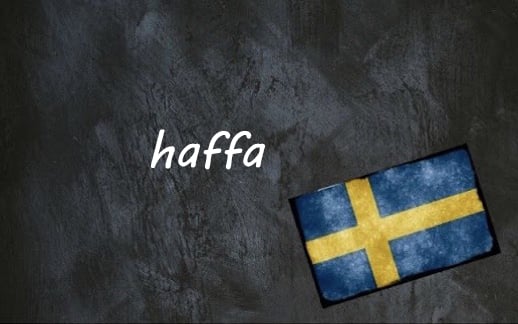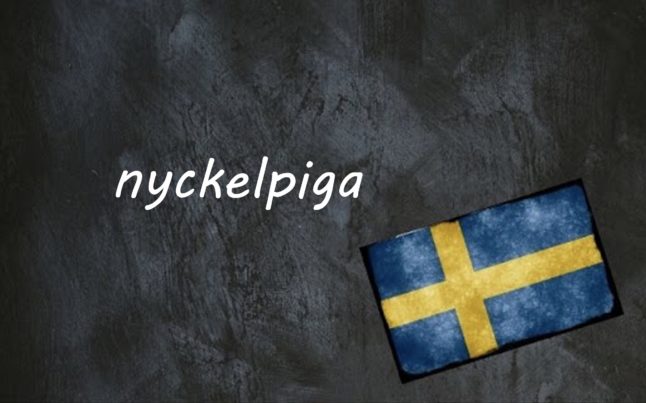Haffa has two meanings according to the Swedish Academy, but if you stretch to common parlance, it actually has three. The first two are: 1. (colloquial) arrest someone; spec. when done by a policeman or the like; 2. (slang) especially with reference to an object: to take possession of (something), to snatch (something).
More recently, a third has sprung up, and that is 3. To hit on someone or to actually succeed in picking someone up.
Haffa has become a cooler way to say att ta (‘to take’ or ‘to grab’). For instance, instead of saying Jag köper det på vägen hem (‘I’ll buy it on my way home’) you can say Jag haffar det på vägen hem. Or instead of saying Kan du ta en åt mig med? (‘Can you grab one for me too?’) you could say Kan du haffa en åt mig med?
The third use is even cooler as it emerged in the immigrant-dominated suburbs around the bigger cities, which tends to give any cultural phenomenon a bit of an edge.
You can say haffa or haff (which is even more ‘ghetto’ or ‘cool’), and they both mean to ‘hit on someone’ or ‘to pick someone up’.
So, for instance, you could ask your friend, Haff du nån igår eller? (‘Did you pick someone up yesterday, or what?’). Or you could declare to your friends as you are about to go out, Ikväll ska vi haffa sönder!, meaning something like, ‘Tonight we’re gonna pick up the whole town’, with sönder meaning ‘until it breaks’, which here is taken to mean ‘a whole lot’.
Make sure not to confuse haffa with haffla, which is an import from Arabic meaning ‘a party’ or ‘to party’. In order to practice this distinction, here is a song by the rapper Erik Lundin, called Haffla, and here is another one by rapper Lilla Namo called Haffa Guzz. Guzz is a borrowing from the Turkish kız, which means ‘girl’.
Whether you are going to a haffla to haffa some guzz or not, you can always make use of haffa when asking anyone to grab you virtually anything.
This might be a copy of the latest report at work or some Swedish caviar at the store for your breakfast caviar and cream cheese toast.
It might even be (although let us hope this does not happen), to tell everyone at the office that your boss has been haffad (past tense) for embezzlement, and you all need to look for a new place to work.
Example sentences:
Nä men lilla vännen, vad vet du om att haffa? Va?
Oh my dear, what do you know about picking up girls/boys? Huh?
Stina! Dom har haffat Berit för skattefiffel!
Stina! They’ve busted Berit for tax evasion!
Villa, Volvo, Vovve: The Local’s Word Guide to Swedish Life, written by The Local’s journalists, is now available to order. Head to lysforlag.com/vvv to read more about it. It is also possible to buy your copy from Amazon US, Amazon UK, Bokus or Adlibris.



 Please whitelist us to continue reading.
Please whitelist us to continue reading.
Member comments